The introductions of the country, dependency and region entries are in the native languages and in English. The other introductions are in English.
Atlas-country
China
中华人民共和国
中文
中国 中华人民共和国 [1] 中华人民共和国 位於亚洲东部、太平洋西岸,陆上从东北至西南分别与亚洲的十餘个国家接壤,海上从东部至南部分别隔黄海、东海、南海与朝鲜半岛、日本列岛、东南亚相望,首都北京。中华人民共和国目前直接管辖中国的22个省、5个少数民族自治区及4个直辖市,并对2个特别行政区行使国防与外交主权;国土总面积约959.67万平方千米[2](实际管辖区域),仅次于俄罗斯、加拿大及美國而居世界第四;陆地总面积(不計河、湖)约932.64万平方千米,仅次于俄罗斯而列世界第二(注);人口超過13亿,是世界上人口最多的国家,佔全球人口的五分之一。
粵語[2]
中國 [3] 中華人民共和國 位於亞洲東部、太平洋西岸,陸上從東北至西南分別同亞洲嘅十幾個國家接壤,海上由東部至南部分別隔黃海、東海、南海同朝鮮半島、日本列島、東南亞相望,首都係北京。中華人民共和國目前直接管轄中國大陸22個省、5個少數民族自治區同埋4個直轄市,並對2個特別行政區行使國防同外交主權;國土總面積約960萬平方千米,僅次俄羅斯、加拿大、美國,居世界第四,陸地總面積約933萬平方千米,居美國、加拿大之前而列世界第二(注);人口逾13億,係世界上人口最多嘅國家。
English
China - People's Republic of ChinaThe People's Republic of China ► North Korea , ► Russia , ► Mongolia , ► Kazakhstan , ► Kyrgyzstan , ► Tajikistan with ► Gorno-Badakhshan , ► Afghanistan , ► Kashmir , disputed by China, ► Pakistan and ► India , ► Nepal , ► India , ► Bhutan , ► Myanmar , ► Laos and ► Vietnam , its own special administrative regions of ► Hong Kong and ► Macau . Furthermore it has maritime borders with ► South Korea , ► Japan , ► Taiwan (Republic of China (claimed by China) and the ► Philippines . It claims the ► Paracel Islands and the ► Spratly Islands , whch leads to additional borders with ► Indonesia , ► Malaysia and ► Brunei . With over one-fifth of the world's population, the PRC has the world's largest population. At over 3.7 million square miles (over 9.5 million km²), the PRC is the third or fourth largest country by area. China has five autonomous regions: ► Tibet , ► Xinjiang , ► Inner Mongolia , ► Ningxia and ► Guangxi .
Short name
China
Official name
People's Republic of China
Status
Independent country, statehood since 1766 BCE. People's Republic proclaimed in 1949. UN member since 1971, recognized by 171 UN members. Permanent Member of the UN Security Council.
Location
East Asia
Capital
北京[4]
Population
1,395,380,000 inhabitants
Area
9,596.960 square kilometres (3,705.407 sq mi)
Major languages
Mandarin Chinese (official), variations of Chinese and minority languages. Main other language is Cantonese.
Major religions
Chinese folk religion (worship of gods and ancestors, Confucianism and Taoism), Buddhism, non-religious population
More information
China , Geography of the China , History of the China and Politics of the China
More images
China - China (Category) .
General maps
Geographic map of China
Geography of China
Map of China
Map of China
Topographic map
Comparison
Sino-Indian border, eastern section
Sino-Indian border, western section
Notable universities in China
C9 League top universities
China 1st-Grade National Museums
Sacred Mountains of China
Highways of China
Yangtze River Delta city belt
Chine High Speed Railways
China grottoes
Major cities
National Parks
mainlines of railways
major museums
Maps of divisions This section holds maps of the administrative divisions.
Shanxi History maps This section holds a short summary of the history of the area of present-day China, illustrated with maps, including historical maps of former countries and empires that included present-day China.
Specific maps of the history of Taiwan are included in the Atlas of the Republic of China .
China dynasties
Huang Di (Ancient China and tribal unions)
Map showing the period of Yu the Great and Xia dynasty (2070 - 1600 BC)
Situation during the Battle of Muye
States of Zhou dynasty
Five Hegemons of Spring and Autumn Period
Situation during the Battle of Changshao
Situation during the Battle of Chengpu
Situation during the Battle of Xiao
Situation during the Battle of Boju
Situation during the Battle of Bi
Journey of Confucius
Early Warring States Period
Situation during the Battle of Guiling
Situation during the Battle of Maling
Situation during the Battle of Changping
Situation during the Battle of Handan
Situation of Qin's unification of China (230 - 221 BC)
Qin Dynasty
Qin dynasty
Uprisings of Qin Dynasty
The Chu-Han contention
The rebellion of seven states
The expansion of Han dynasty in 2th century BC
Han civilization 87 BCE
Lulin and Chimei Uprisings of Xin Dynasty
Han Civilization 2 BCE
Han foreign relations
Western Han Dinasty
Han Dinasty 189
Yellow Turban Rebellion
Warlords of Han
Battle of Yiling
Zhuge Liang's Southern Campaign
Zhuge Liang 1st and 2nd Northern Expeditions
Zhuge Liang 3rd Northern Expedition
Zhuge Liang 4th and 5th Northern Expeditions
Uprising of Five Barbarians
Sixteen Kingdoms in 317
Sixteen Kingdoms in 326
Sixteen Kingdoms in 338
Sixteen Kingdoms in 350
Sixteen Kingdoms in 376
Sixteen Kingdoms in 391
Sixteen Kingdoms in 398
Sixteen Kingdoms in 402
Sixteen Kingdoms in 406
Sixteen Kingdoms in 416
Sixteen Kingdoms in 423
Sixteen Kingdoms in 436
Battle of Fei River
Battle of Canhe Slope
Duan Qi and Ran Wei kingdoms
Helian Xia kingdom
Huan Wen expeditions
Liu Yu expeditions
Northern Wei and Liu Song
Northern Wei and Southern Qi
Eastern Wei, Western Wei and Liang
Northern Qi, Northern Zhou and Chen
Liu Song dynasty
Northern Wei dynasty
Northern Qi, Northern Zhou and Chen dynasties
Territory of Sui
Uprisings of Sui
Establishment of Tang Dynasty
Battle of Hulao
Administrative divisions of Tang dynasty in 660-663
The 10 major Jiedushi of Tang dynasty during Emperor Xuanzong's reign
Battle of Yinshan Mountains between Tang and Tujue
The conquest of Tuyuhun by Tang
Battle of Dafeichuan between Tang and Tibetan Empire
The wars between Tang and Korean kingdoms
The war between Tang and Western Tujue
Battle of Talas
Tang Dynasty
Khitan Rebellion during Wu Zetian's reign
Fanzhens of Tang dynasty during Emperor Xianzong's reign
Balhae Kingdom
Kingdom of Khotan
Establishment of Song Dynasty
Liao (Khitan) Dynasty and Northern Song
Northern Song
Uprisings of Song Jiang and Fang La in Song dynasty
Western Xia kingdom
Dali Kingdom
Jurchen Jin Dynasty
The wars between Song and Jurchen Jin
Western Liao
Battle of Qatwan
Mongol invasion
Map showing changes in borders of the Mongol Empire from founding by Genghis Khan in 1206, Genghis Khan's death in 1227 to the rule of Kublai Khan (1260–1294). (Uses modern day borders)
By 1294 the empire had split into:
Uprisings and warlords before the end of Yuan dynasty
Ming Dynasty (1368-1644)
Great Wall and Nine Garrisons of Ming Dynasty
Tumu Fort Crisis
Ming-Turpan Conflict
Battle of Ningyuan
Battle of Shanhai Pass
Southern Ming
Three Feudatories rebellion
Qing Empire and nearby countries (1700)
Qing Dynasty (1820)
Qing Dynasty (1892)
Boxer Rebellion
Mutual Protection of Southeast
Viceroys of Qing Dynasty
Situation during Northern Expedition
Civil War (1928-1937)
Republic of China (1930)
China Soviet Zones
Central Plains War
The Long March of Red Army
Battle of Luding Bridge
Creation of Manchukuo as Japanse puppet state
Map of Manchukuo
Growth of the Japanese Empire
Situation in 1940
Japanese plans in 1941
Situation in 1944
Situation in October 1944
Chinese Civil War in 1947
Chinese Civil War in 1948
Chinese Civil War in early 1949
Chinese Civil War in later 1949
Three Campaigns of Chinese Civil War
Pingjin Campaign
Movement of the Republic of China to Taiwan
Hainan Island Campaign
Maps of ancient Chinese capital cities
Luoyang in Han Dynasty
Xi'an in Tang Dynasty
Kaifeng in Song Dynasty
Dadu in Yuan Dynasty
Nanjing in Ming Dynasty
Beijing in Ming and Qing Dynasties
History of Xi'an
History of Beijing
Old maps This section holds copies of original general maps more than 70 years old.
Map of China 1936
Map of Manchukuo
Maps of autonomous regions see also Atlas of Hong Kong , Atlas of Macau and Atlas of Tibet
Nationalities of Xinjiang Uygur Autonomous Region
Administrative divisions
Agricultural regions
Satellite maps
Satellite map
Notes and references
General remarks:
The WIKIMEDIA COMMONS Atlas of the World is an organized and commented collection of geographical, political and historical maps available at Wikimedia Commons. The main page is therefore the portal to maps and cartography on Wikimedia. That page contains links to entries by country, continent and by topic as well as general notes and references .
Every entry has an introduction section in English. If other languages are native and/or official in an entity, introductions in other languages are added in separate sections. The text of the introduction(s) is based on the content of the Wikipedia encyclopedia. For sources of the introduction see therefore the Wikipedia entries linked to. The same goes for the texts in the history sections.
Historical maps are included in the continent, country and dependency entries.
The status of various entities is disputed. See the content for the entities concerned.
The maps of former countries that are more or less continued by a present-day country or had a territory included in only one or two countries are included in the atlas of the present-day country. For example the Ottoman Empire can be found in the Atlas of Turkey .
↑ Romanization according to the Hanyu Pinyin standard: Zhōngguó - Zhōnghuá Rénmín Gònghéguó .
↑ Yue Chinese (Cantonese)
↑ Only romanization of the short name: Heūnggóng .
↑ Romanization according to the Hanyu Pinyin standard: Běijīng .
Entries available in the atlas 













































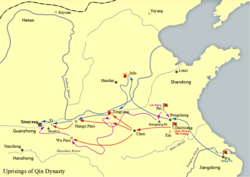













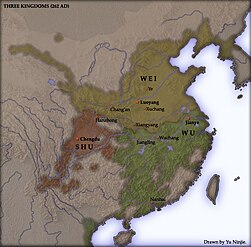




































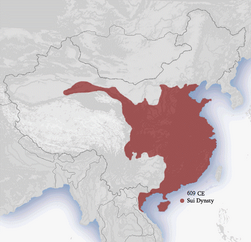





















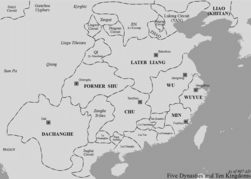








































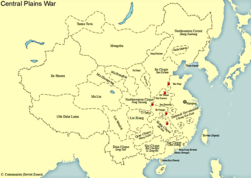























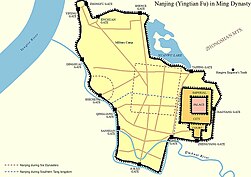











_-_CHN_-_UNOCHA.svg/200px-China_-_Location_Map_(2013)_-_CHN_-_UNOCHA.svg.png)












































